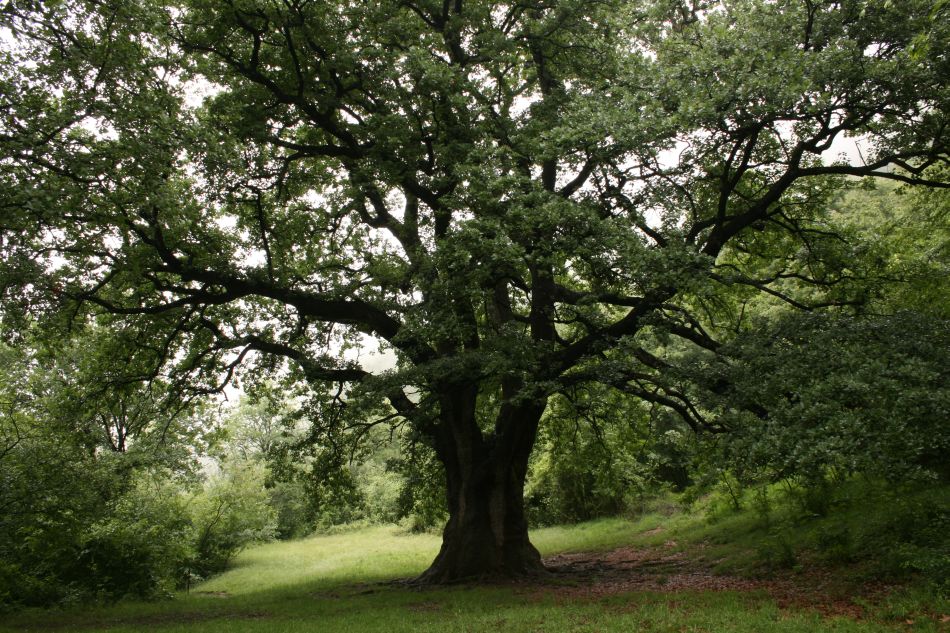
Grandola Rugulon
This post is also available in:
 Italiano (Italian)
Italiano (Italian)
Quercus petrea (Fagaceae)
“Rugulon” (“Rogolone”) is a majestic oak tree that grows a short distance from a smaller one of the same species, the “Rugulin”. The largest of the two trees has a circumference of 26.2 ft and reaches a height of 91.8 ft; in the warm season, it features a luxuriant crown that shows all its centuries-old charm.
According to the tradition, in 1530 the elders of the adjacent municipalities (Beilate, Naggio, and Grandola) gathered in the shadow of the large tree to discuss local politics. Always according to the tradition, some local people thought the Rogolone to be more than 500 years-old – some others even spoke about thousands of years of age.
Dendrochronology studies have recently ascertained that the “Rugulon” is actually 285 years old, while the “Rugulin” was planted 195 years ago.
The Rogolone is owned and managed by Italia Nostra Association and has been considered a national monument since 1928.
The two trees grow in broad-leaved forests, made of black hornbeams, oaks, downy oaks, chestnuts and hazel trees, where the undergrowth is rich in hellebore, butcher’s broom, and various species of orchids.
In the surroundings, there are several wet meadows with some typical marsh plant species, such as the black bog-rush, and moor grasses.
How to get there:
Starting in Villa Camozzi (comune di Grandola e Uniti) – which houses the city hall and the Ethnographic and Naturalistic Museum of Val Sanagra, take the dirt road which will take visitors to those two oaks in some 50 minutes.
Botanical Card
The oak distribution area extends over almost all Western and Central Europe. In Italy, this species is abundant in all the regions but Sardinia; actually, there would be more oaks all over the country, if agriculture exploitation and wood production were less aggressive on the whole territory.
It is a mildly sciophilous species that prefers hilly areas with acidic or sub-acid soils. It loves environments with high humidity all year round, and for this very reason, oaks tend to be suitable for an oceanic climate.
In central Europe and the Prealps, oak trees are associated with different species based on the different soil: acidic soil is suitable for birch; less acidic and well-drained one are perfect for white hornbeams, wild limes and beeches; soils with a lot of water usually feature hornbeams, mountain maples, and curly maples.
Oakwood is used in shipbuilding and construction, but also to manufacture barrels, furniture and flooring.
This post is also available in:
 Italiano (Italian)
Italiano (Italian)
Contatti
22010 Grandola e Uniti(CO)
